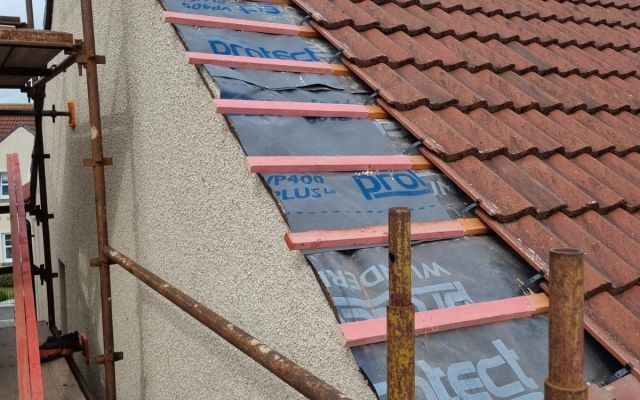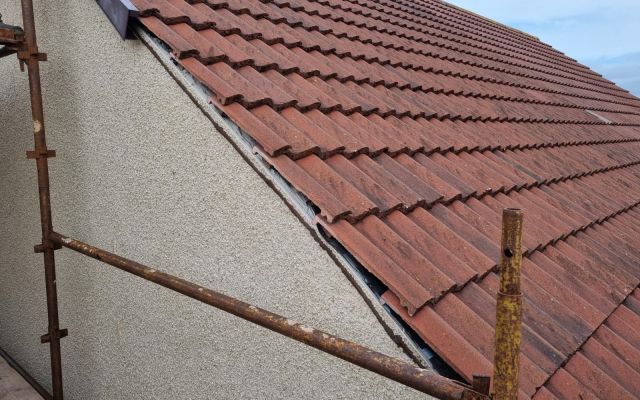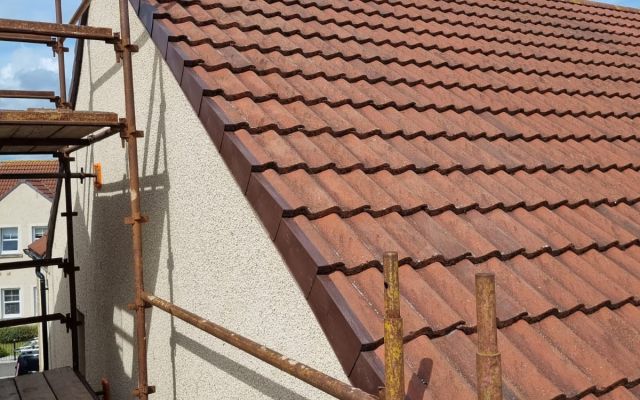Roof Verges Repair and Reinforcement in Larbert, Falkirk
Problem
In this newly constructed property, the entire side of the verges at the gable fell off. This occurred because they were not attached to the tile battens, as these battens were not extended far enough to secure the nails. Consequently, the verges were merely hanging freely on the side of the roof, and a minor gust of wind was sufficient to dislodge them all.
Solution
Our first step was to erect a full scaffolding along the rear of the house and the entire length of the gable end. We then had to remove the roof tiles three rows back from the gable up to the ridge, as well as three ridge tiles and the dry ridging system.
This allowed us to cut all the tile battens back to bridge over three roof joists and then fit new sections of tile battens. These were extended out far enough to secure the nails needed to fit the plastic dry verges. We then installed brand new Redland dry verges to match the original ones on the house.
Results
The final outcome of our work was a roof that is both wind and water-tight. We achieved this by fitting new sections of Swedish grade A tile battens and securing the Redland dry verges at the gable with 65mm ring shank nails. These nails are designed not to come out unless they are extremely forced or cut, ensuring that the Redland dry verges will not dislodge again.
This has given the homeowner peace of mind that her roof will not fall apart again and will keep her protected from the weather for the rest of the roof's lifespan, which is expected to be the next 40-45 years, depending on weather conditions.
For All Your Roofing Needs.

Contact
-
This email address is being protected from spambots. You need JavaScript enabled to view it.






